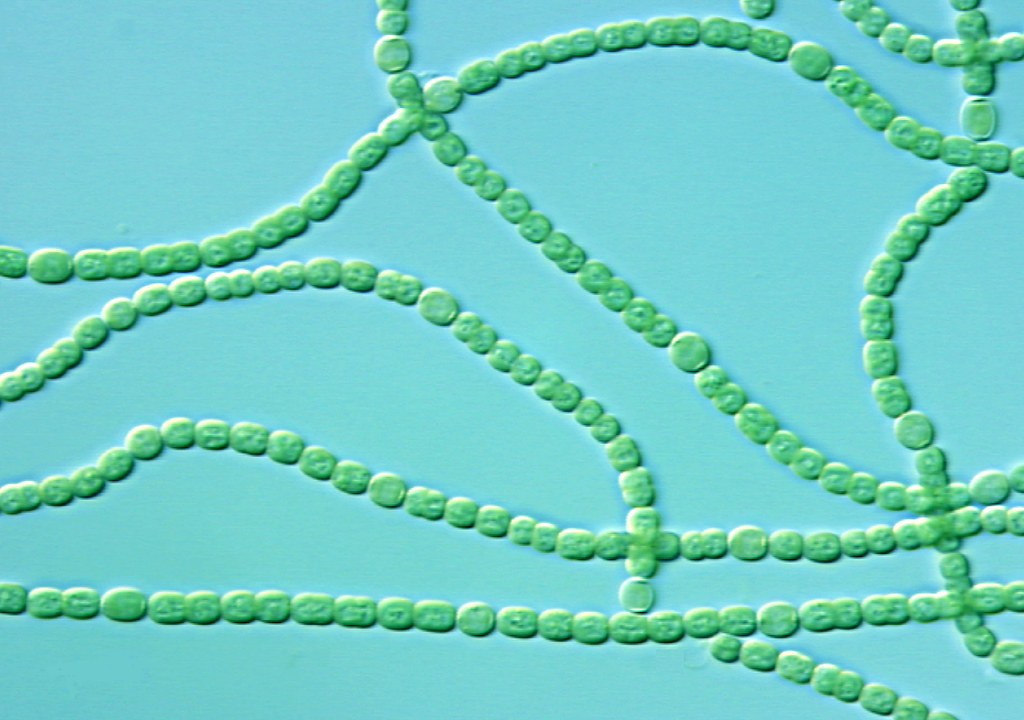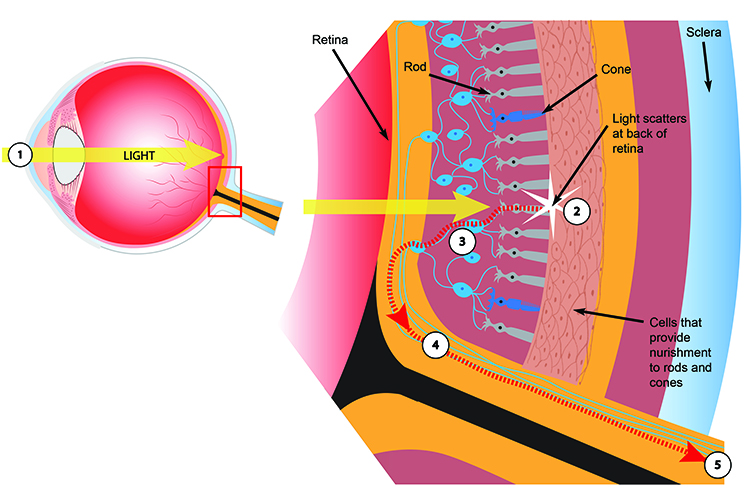Hi, my name is James and welcome to Code/Switch, and today I want to talk about sight. Sight is one of the top 10 human senses, and easily in my top 3. Sight only lags behind touch and hearing for me because it’s the only one I can’t do in the dark, my favored terrain. As a human I have to be content with my vision, but in Pathfinder there’s a myriad of other visions used by other races, and today I’m going to examine how normal vision and low-light vision work, and even speculate some ways in which darkvision may function.
For starters, I want to go over how vision works. We’re omitting things like blindsight, tremor sight, and all those other “sights” as they aren’t actually visions, but very precise ways to use other senses. For vision you need 3 things; an organ to take in light (like eyes), a nervous system to send the data gathered from the light sensitive organ (something like an ocular nerve), and lastly, a nervous system to interpret the data sent by your vision (like your brain). That last one isn’t always necessary, but for higher functioning organisms like humanoids, it would be, microscopic eyes that only sense light and dark can kick rocks.
Eyes take in photons of light from their environment, specifically on the retina, where they are “absorbed” by hundreds of millions of photoreceptor cells. Which cells absorb which kind of light determine how sharp the picture is and what colors it is. Additionally, the wavelength of the light and it’s intensity determine what we see. In our retina we have 2 kinds of photoreceptor cells, rods and cones. Rods are very receptive to light, but don’t do much to interpret color from the light it receives. Cones on the other hand need more light than rods to activate, but differentiate colors.
Before moving on to actual Pathfinder visions, I need to describe “light” and what I mean by it. This is more complicated than you’d imagine. Light is electromagnetic radiation which happens to be oscillating at a certain frequency, called hertz. You may be familiar with this term in regards to computer monitors with phrases like 60 hertz, 120 hertz, 144 hertz, etc. For monitors it means a new image is drawn on the screen that many times (60, 120, 144) per second, for electromagnetic radiation it means how many times the wave completes a cycle in a second. For wavelength, I want you to think of an ocean and its waves. You have high crests, and low troughs that follow it, when talking about light, the wavelength is the distance between the crests or the distance between troughs, which will always be equal as a wavelength is continual. Also, side note, wavelength and hertz are proportional, so a smaller wavelength will also cycle faster. Lastly, electromagnetic waves have energy, the smaller the wavelength and the higher the frequency, the more energy that wave carries. Gamma radiation for example is so energetic it can damage your DNA through walls, but lower its energy state and it could be perceived as blue light, but you’d have to de-energize it by a lot. Lastly, intensity matters, if there’s not enough electromagnetic radiation produced, even if it is at a high energy state, you could perceive it.
Congratulations! If you made it this far, you’re past the real crunch of the article, light is hard. But luckily for you, human vision isn’t. We see stuff in color because we have the ability to thanks to cones and visible light falls in the wavelengths between 380-740 nanometers, with a frequency of 430-770 terahertz. On the high end of this, to visualize this, a photon of light perceived as violet has a wavelength 16 times smaller than a red blood cell and its energy wave cycles 430,000,000,000,000 times per second. Your eyes are amazing. Low-light vision is not so dissimilar to our normal vision. It can be achieved by having more rod cells, more sensitive photoreceptor cells, or by cheating and making the inside of your eyes shiny to trap more light, like cats and deer. It’s darkvision that we really have to pull out the stops to explain.
Sight is an inherently visual phenomenon, it requires light, deep underground there is no light*. Creatures on earth that live without light tend to lose their eyes, empower other senses, or bioluminesce to allow them to perceive the world around them. Dwarves, orcs, and other subterranean creatures in Pathfinder don’t seem to do any of these things, but they can still see in complete darkness a limited distance without color, as the Pathfinder CRB says darkvision is in black and white. We can use this to speculate how these creatures see in total darkness*.
Those “*” are there on purpose, light is electromagnetic radiation which is always around, it’s just not always in our visible spectrum. Most people are familiar with the term “ultraviolet” and its associated lights, while we can’t see in ultraviolet, we can use it to cause other items to glow with blacklights and its possible some other organisms are able to see into that part of the spectrum.
I have 3 theories about how darkvision works. Theory 1; Creatures with darkvision are all bioluminescent, but at an ultraviolet or lower wavelength. Theory 2; Golarion is filled with elements and isotopes which are decaying into ultraviolet or lower wavelength light. Theory 3; Creatures with darkvision have hyper-sensitive eyes packed with cones that can perceive their own black-body radiation.
Theory 1 is a fun idea and stretches back to an ancient idea of how vision worked where you’re eyes shot sight lasers, Euclid and Ptolemy apparently thought this was how sight worked. Bioluminescence is actually pretty common, especially deep in the ocean. I found one example from an article abstract about a crab that may produce UV-light to signal other crabs, but I couldn’t corroborate it and left it out of this article. I do like the image of dwarves all glowing to each other underground.
Theory 2 is the most grim-dark in my opinion. Golarion is filled with radioactive elements and compounds undergoing gamma decay, causing pulses of electromagnetic radiation. The wavelength and frequencies are so energetic they’re classed as ionizing radiation, the kind that kills your real fast. Apparently, creatures on Golarion have amazing radiation resistance, or it explains all the anthropomorphic animals. (It’s doesn’t, radiation doesn’t do that, not in your wildest fan-fic).
Theory 3 may be the most likely, although we’d need to explain how even the smallest amount of daylight doesn’t destroy their retinas, like it does to the ogre spider. It turns out humans glow, just really poorly. This glow is due to metabolic processes that follow our daily circadian rhythm and to make it even cooler, we glow at the same wavelength as visible light! Sadly, the light we produce isn’t intense enough, in fact it wasn’t until 10 years ago that we were able to observe this glow, before it had just been theorized. However, if creatures with darkvision have the same ability as this camera to detect wayward photons, they could see around them using themselves as a candle, similar to theory 1, but without having them develop a specialized retina that can detect UV light.
I hope this article was enlightening on darkvision, hopefully you’ll think its a less lame racial ability from now on. You can find me and the rest of the KD Crew at our Discord! This article was made at the suggestion of a reader, so feel free to throw ideas out there, one may be neat enough to do!











